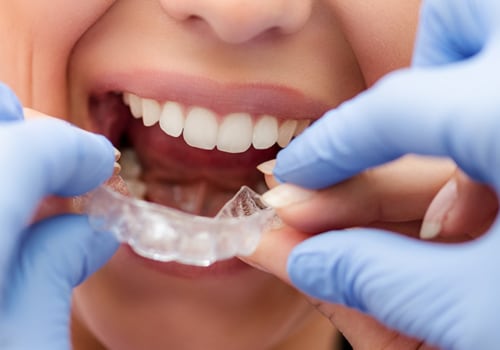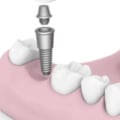When it comes to improving your smile, you have the freedom to choose who you think can do the best job for you. However, it's important to remember that your general dentist still plays an important role in your care. Before visiting an orthodontic specialist, your dentist should make sure that your teeth and gums are healthy enough for orthodontic treatment. Before you get braces, it's important to visit your family dentist for a cleaning and checkup. It's also important to ask your orthodontist how long before your appointment you should put your braces on.
During the duration of treatment, you should visit the dentist at least every six months, or more frequently if recommended. If you normally take antibiotics before dental visits, be sure to tell your orthodontist, who will let you know if premedication is necessary before placing orthodontic appliances. Additionally, inform your orthodontist of any allergies you have, especially any allergies to metals such as nickel. Many orthodontists suggest that a child should see an orthodontist before the age of seven so that any problems can be identified in time. This doesn't mean that a child will get braces right away.
However, the orthodontist will be aware of any existing issues and will be able to determine the best time to start treatment. You'll need to visit the dentist regularly throughout treatment (every three to six months).The Ontario Association of Orthodontists (OAO) is the official voice of Ontario orthodontists before organized dental associations, recognized educational institutions, professional licensing bodies, the public and the government. Orthodontics (also known as dentofacial orthopedics) is a specialized form of dentistry that focuses on diagnosing, preventing and treating dental and facial abnormalities. Your orthodontist will stay in close contact with your dentist to make sure everything is going well.
If you don't have a dentist, they can refer you to one in Ancaster or the Hamilton area. Your dentist will work closely with your orthodontist to ensure that your teeth stay clean and healthy while wearing braces. Dentists treat patients' general oral health, according to the American Association of Orthodontists (AAO). To become a dentist, a person must complete four years of college education and four years of dental school, according to the American Dental Association. If you've been given an orthodontic appliance and need it repaired, your orthodontist can help. Your dentist or one of your parents may recommend seeing an orthodontist if they notice a problem with your teeth or jaws.
Qualified dentists have either DDS (Doctor of Dental Surgery) or DMD (Doctor of Medicine in Dentistry or Doctor of Dental Medicine) after their names. Orthodontics is a branch of dentistry that specializes in straightening teeth and correcting problems caused by misalignment of the teeth and jawbone. Orthodontists have many tools at their disposal that help them align their teeth and jaws correctly, including traditional braces, lingual braces and transparent aligners among other orthodontic appliances. There is no set age for when a child should go to the orthodontist; some children go when they are six years old, others go when they are ten years old and others go during adolescence. With braces and other tools, an orthodontist helps straighten a person's teeth and correct how their jaws align. You don't need a referral from anyone else to go for a consultation or for treatment. If you want to improve the appearance of your smile, any age can be a good age to see an orthodontist.






